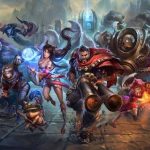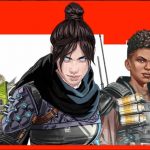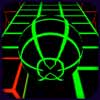For over a decade, Counter-Strike: Global Offensive (CS:GO) has defined competitive gaming. The sequel, Counter-Strike 2 (CS2), has had the effect that the ranking systems appears to not be as superficial as in previous versions, as they are now an integral part of a players’ journey. Ranks are not just awards and grades, they are measures of competency, dedication, and collaboration.
In addition to these new functionalities and capabilities, the ranking environment in CS2 is evolving with the introduction of the map-based ranking and Premier Mode. In this paper, we study the intricacies of both CS:GO and CS2 rankings, how they are disseminated, and the effort it takes to move up the competitive ladder.
The hierarchy of ranks
The CS:GO ranking system is famous for its breadth and accessibility to amateurs, professionals, and lay audiences alike. Ranks are divided into 18 tiers, from Silver I to Global Elite, which is the maximum rank a gamer can have in the game. Each tier is an increment of the level of expertise, from novice to expert, including the ability to master the technicalities of the art. Silver ranks dominate the lower spectrum, followed by Gold Nova, which houses the bulk of average players. Master Guardian and Legendary Elite, the upper echelons, have both high tactical skill and mechanical skill demands.
This tiered system offers the benefit of being able to enjoy the experience of progression, by climbing the CS ranks through strategic play, mastery performance, and collaborative effort. Yet, reaching the pinnacle is no small feat. The system is very competitive, with the player rate to achieve Global Elite being less than 0.75% of players. For the majority, the space between Silver and Gold Nova is the home of more than half of the players, and where players can take their biggest steps.
Rank distribution and player challenges
The distribution of rank is a type of observation about players’ skill levels. Amateur participation is encouraged at amateur levels, whereas at higher levels of play it is a completely professional business, run on the parameters of mechanics, map awareness, and contextual knowledge. Climbing ladders is not only within the domain of work from an individual performance, but that same process also depending on team dynamics. In that sense, Master Guardian and above often have been described to make quite deliberate pre-planning arrangements, use map-based tactics, and respond to the tactics of opponents in the midgame.
Yet, challenges abound. Smurfing, which is when more experienced players create new accounts to play in lower divisions, continues to be disruptive to the balance, frustrating the genuine players. On the other hand, cheating, being a major issue even with a robust anti-cheat system, remains an issue, due to the introduction of classic competitive mode. Despite the solutions presented by Valve in CS2, it is now evident they are still impacting the experiences of a lot of players.
Introducing CS2 Premier Mode
The introduction of CS2 brought the shape of Premier Mode, a new competitive mode of ranking. Unlike the fixed rank system of the previous system, the Matchmaking Rating (MMR) system of Premier Mode is applied. This move is intended to do a better job of matching players, so that they are facing other players of similar skill levels, as measured by their MMR. When 10 game placements are over, the player’s starting score is reported and can be incremented by a series of subsequent game wins.
MMR is divided into color-coded tiers from Gray (5,000 MMR or below) for novice players up to Gold (30,000+ MMR) as a global rank corresponding to Global Elite. This system provides a scalable and open way for players to measure progress. Yet, the absence of a definable measurement and the details on how MMR is calculated can be questioned, as some players are uncertain about the effects of their rating. However, with the introduction of Premier Mode, there has been a shift toward a more personalized competitive experience.
Map-specific rankings: A unique feature
One uniqueness of CS2 is the recovery of map-specific rankings in the classic competitive setting. In this system, players need to achieve different kinds of rankings for each map, which is designed to encourage variability in playing experience and learn all maps through experience on new maps. This guarantees that players do not become overly fond of any map as a personal favorite map, and instead develop multi-map balanced skills that can be used in any situation.
For instance, a high score in Dust II may be because of the familiarity with the game rather than other maps, e.g., Ancient or Anubis. This apparatus introduces the game with strategic heterogeneity in that the player is expected to memorize some, but not all, maps, and that a player’s performance and mastery on a particular map is realistically captured. In addition, it offers the players new directions for their playstyle experiments, such as for example testing strategies, and playing on a dynamic game world.
Climbing the competitive ladder
Shooting up the ladder is everyone’s mission in CS2. However, progression demands more than just raw skill. Consistency is key. Repeat practice of aiming, learning game mechanics, and learning maps is followed by sustained improvement in players. It is useful to view skill training tools, community resources, and professional plays analysis as inputs for skill development.
Equally important is team communication. Achievement of higher ranks can, in certain cases, be dependent on the accuracy of this coordination, for example the use of target identification or application of complex tactics. Players who regularly form teams and stick together will most often advance at an accelerated pace as they become synergistic, reliable teammates.
Concluding remarks
The ranking systems in CS:GO and CS2 are more than just numbers; they reflect a decade of evolution in competitive gaming. At the formally structured tiers of Silver all the way to the high-end Global Elite, and with the introduction of the MMR-based Premier Mode, the modes target various player goals. They are intended to make players continuously develop their skills, evolve, and become effective in adapting to new strategies.






























